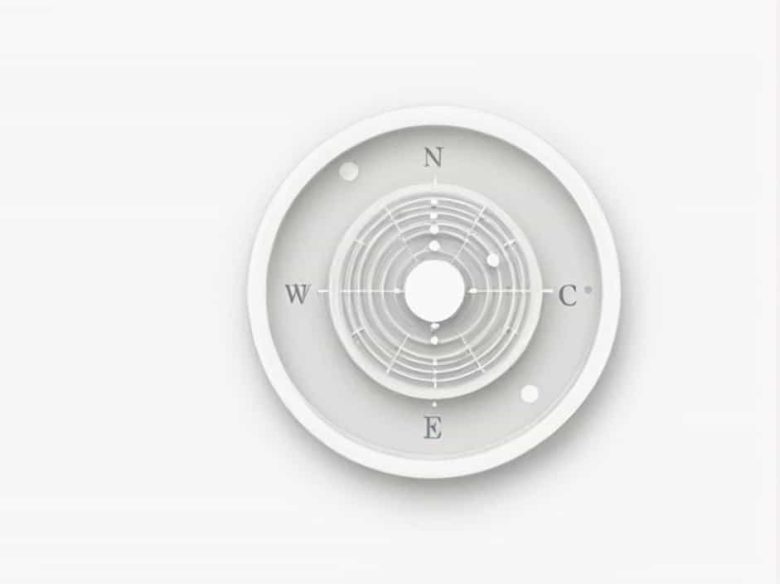The Heliocentric Model proposed by Nicolaus Copernicus stands as one of the most significant breakthroughs in the history of astronomy. Before Copernicus, the geocentric model, which placed Earth at the center of the universe, was widely accepted. Copernicus, however, introduced a new way of thinking that radically changed our understanding of the cosmos. In this topic, we’ll explore what the heliocentric model is, its historical context, and the profound impact it had on science and society.
What is the Heliocentric Model?
The heliocentric model, introduced by Copernicus in the 16th century, is the theory that the Sun, rather than the Earth, is at the center of the solar system. According to this model, Earth and the other planets orbit around the Sun. This was in stark contrast to the geocentric model, which suggested that the Earth was the center of the universe, and everything, including the Sun, revolved around it.
The Key Concept: Sun-Centered Solar System
At the heart of the heliocentric model is the idea that the Sun is the central point in the solar system. Copernicus proposed that the planets, including Earth, orbit around the Sun in circular paths. This concept, though later refined by scientists such as Johannes Kepler, was revolutionary because it shifted humanity’s perspective from an Earth-centered universe to a Sun-centered one.
The Historical Context of the Geocentric Model
To understand the significance of Copernicus’s heliocentric model, it’s important to first consider the prevailing belief system at the time. For over a thousand years, the geocentric model, also known as the Ptolemaic model, was the dominant theory in Western astronomy.
The Geocentric Model
The geocentric model, proposed by ancient Greek philosopher Claudius Ptolemy, suggested that Earth was the stationary center of the universe and that everything, including the Sun, Moon, stars, and planets, revolved around it. This model was widely accepted because it aligned with everyday observations: the Sun appeared to rise in the east and set in the west, giving the impression that Earth was the center of all motion in the sky.
Influence of the Church
The geocentric model was also deeply intertwined with religious beliefs. During the Middle Ages, the Catholic Church adopted the Ptolemaic system because it placed humanity and Earth at the center of God’s creation. This made the model not just a scientific theory but also a theological cornerstone. For this reason, challenging the geocentric model was a dangerous endeavor.
Copernicus’s Heliocentric Theory
Nicolaus Copernicus, a Polish astronomer, was the first to propose a mathematically supported heliocentric theory. In his book De revolutionibus orbium coelestium (On the Revolutions of the Celestial Spheres), published in 1543, Copernicus outlined his ideas about the structure of the solar system.
Key Elements of the Heliocentric Model
-
The Sun is at the Center: Copernicus argued that the Sun, not the Earth, is the center of the solar system.
-
Planets Revolve Around the Sun: According to Copernicus, the planets, including Earth, orbit around the Sun in circular orbits.
-
Earth’s Movements: Copernicus suggested that Earth rotates on its axis daily, which accounts for the apparent movement of the stars across the sky. He also proposed that Earth revolves around the Sun once a year, explaining the change in seasons.
-
Retrograde Motion: One of the key reasons Copernicus proposed the heliocentric model was to explain the retrograde motion of planets. In the geocentric model, retrograde motion (the apparent backward motion of planets) was difficult to explain. Copernicus’s model provided a simpler explanation for this phenomenon, showing that retrograde motion occurs when Earth overtakes a planet in its orbit.
Why Was the Heliocentric Model Revolutionary?
The heliocentric model proposed by Copernicus was groundbreaking for several reasons:
-
Shift in Perspective: The idea that Earth was not the center of the universe was a radical shift in perspective. It challenged the deeply held beliefs of humanity’s special place in the cosmos and contradicted the religious and philosophical views of the time.
-
Scientific Accuracy: While Copernicus’s model was not entirely correct (he still believed in circular orbits), it laid the groundwork for more accurate models of the solar system. Johannes Kepler later corrected Copernicus’s circular orbits, showing that the planets actually follow elliptical paths.
-
Simplicity: The heliocentric model simplified the understanding of planetary motion. It removed the need for complex epicycles (circular orbits within circular orbits) that were part of the geocentric model. This made the heliocentric model more elegant and mathematically manageable.
-
Challenging Authority: Copernicus’s ideas faced strong resistance from both the Catholic Church and many scholars of the time. His theory contradicted the established view of the universe, leading to significant controversy. It wasn’t until later astronomers like Galileo Galilei and Johannes Kepler provided more evidence that the heliocentric model gained widespread acceptance.
The Impact of Copernicus’s Heliocentric Model
Though initially met with skepticism, the heliocentric model eventually had profound effects on both science and society.
The Scientific Revolution
Copernicus’s heliocentric theory played a crucial role in the Scientific Revolution. It sparked further investigations into the nature of the universe, leading to the development of modern astronomy and physics.
- Galileo’s Observations: Using a telescope, Galileo Galilei provided direct evidence supporting the heliocentric model. His observations of Jupiter’s moons, which orbited Jupiter rather than Earth, challenged the geocentric view.
- Kepler’s Laws: Johannes Kepler built on Copernicus’s work by showing that the planets move in elliptical orbits rather than circular ones, refining the heliocentric model.
- Newton’s Laws of Motion: Isaac Newton’s work on gravity provided the mathematical framework for understanding the motion of planets, further validating the heliocentric theory.
The Church’s Reaction
Initially, the Catholic Church rejected Copernicus’s heliocentric model. In the 17th century, Galileo’s support for the heliocentric theory led to his infamous trial by the Inquisition. The Church eventually conceded to the heliocentric view, but it took many years for the scientific community and religious authorities to reach a consensus.
Shift in Worldview
The heliocentric model fundamentally changed humanity’s understanding of the universe. It shifted the focus from a human-centered Earth to a Sun-centered solar system. Over time, this shift contributed to the development of modern science, challenging existing worldviews and encouraging a more empirical approach to understanding nature.
Nicolaus Copernicus’s heliocentric model was a revolutionary concept that transformed our understanding of the cosmos. It moved Earth from the center of the universe to just one planet orbiting the Sun, challenging centuries of established belief. Despite initial resistance, Copernicus’s theory laid the foundation for the development of modern astronomy and contributed to the broader Scientific Revolution. The heliocentric model not only reshaped scientific thought but also had a lasting impact on philosophy, religion, and society. Copernicus’s work remains a monumental milestone in the history of science.



